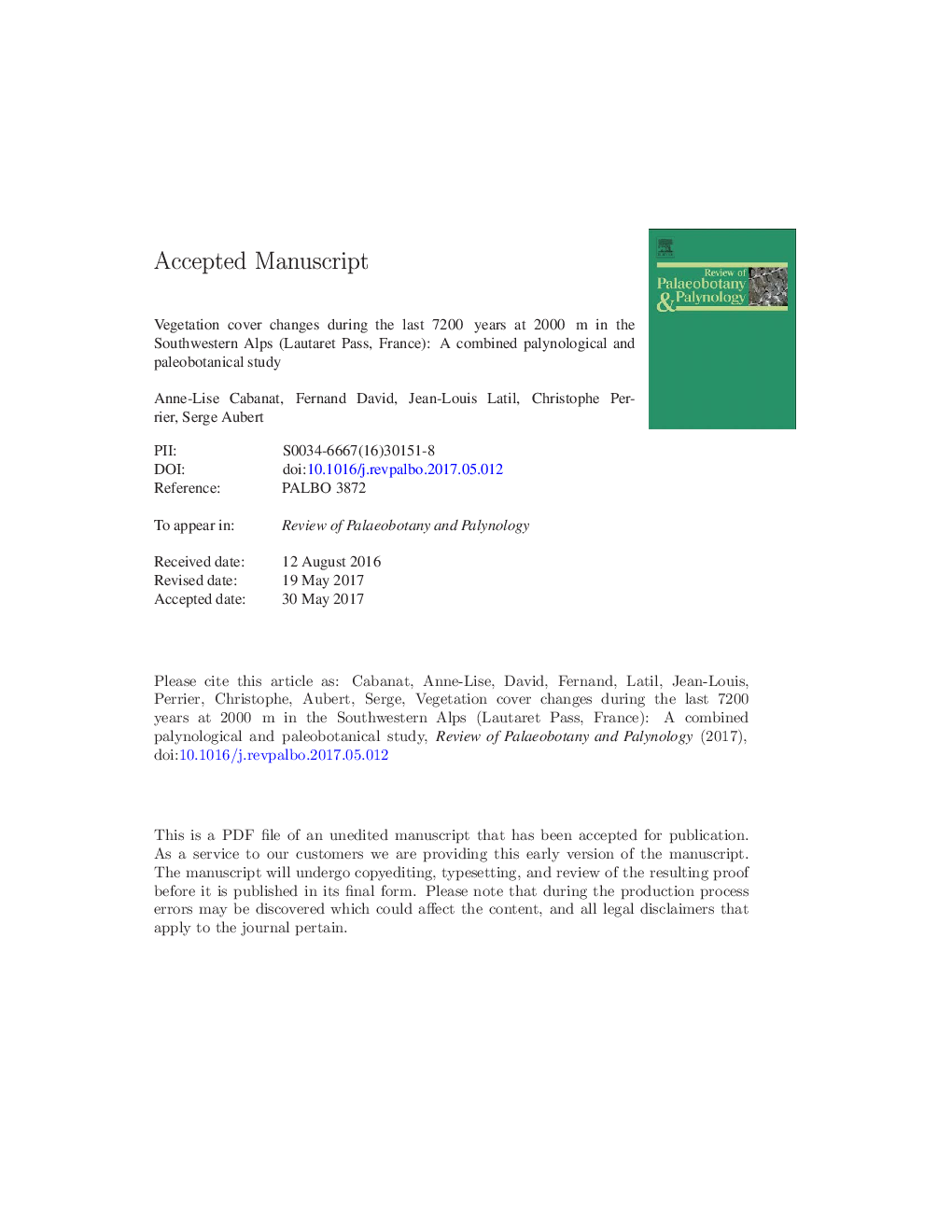| Article ID | Journal | Published Year | Pages | File Type |
|---|---|---|---|---|
| 5788309 | Review of Palaeobotany and Palynology | 2017 | 46 Pages |
Abstract
We present a multidisciplinary approach to document the vegetation and landscape of Upper Guisane Valley around the Lautaret Pass area in the French Southwestern Alps since 7200Â calyr BP. We combined pollen analysis in a peat bog (at 2044Â m) with a leaf imprint study in two nearby travertine systems (at 2100 and 1950Â m). During the last 7200Â years, there was an open landscape with scarce trees such asconifers including Larix decidua Mill., Pinus spp., and Abies alba Mill. 2100Â m was the highest altitude where fossils of A. alba Mill. have been reported in the Guisane Valley. These results, according to the pollen record of anthropogenic indicators and an increasing biodiversity of grasslands, suggest a human presence in the pass area since ca 6500Â years with a pre-Roman deforestation. This human impact has become maximum from 1100Â calyr BP to present, resulting from cereal crop agriculture and deforestation. The comparative study of the different records confirmed the role played by the exposition in the forest dynamics of the alpine valleys during the Holocene.
Related Topics
Physical Sciences and Engineering
Earth and Planetary Sciences
Palaeontology
Authors
Anne-Lise Cabanat, Fernand David, Jean-Louis Latil, Christophe Perrier, Serge Aubert,
